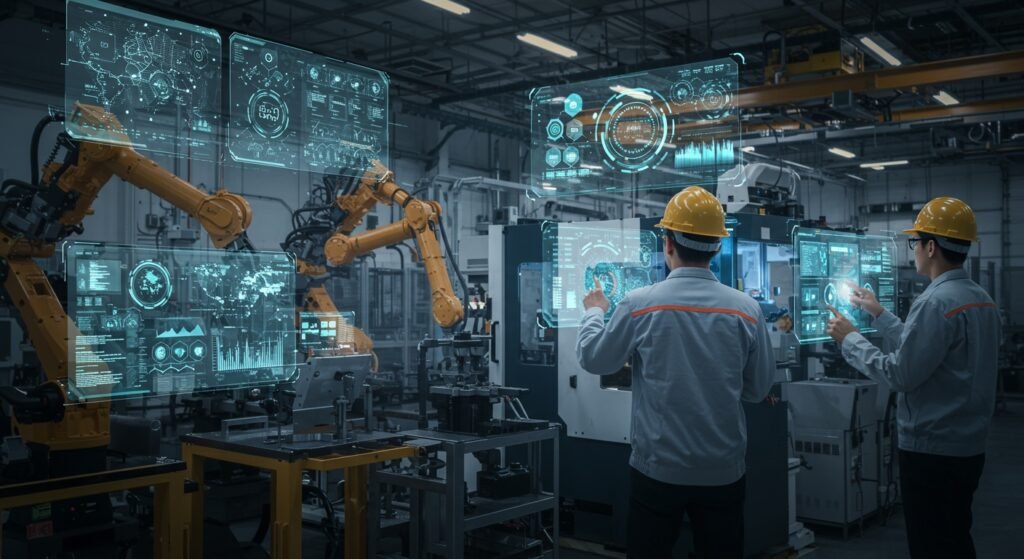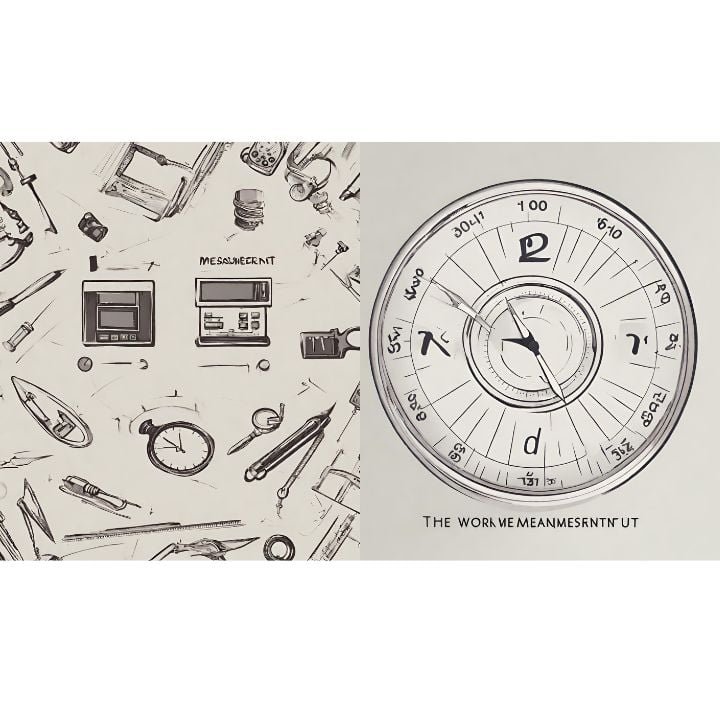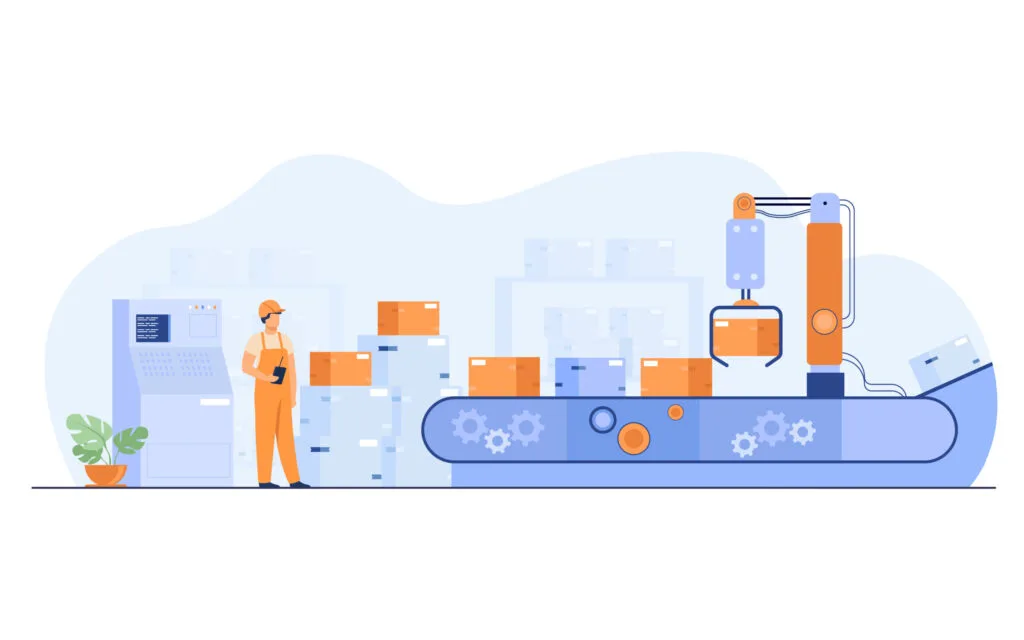Top Industry 4.0 Innovations Shaping Industrial Engineering in Late 2025
The landscape of industrial engineering is undergoing an unprecedented transformation, driven by the rapid evolution of Industry 4.0 trends. As we approach late 2025, a wave of innovations is not just optimizing processes but fundamentally redefining how industries operate, design, and create. This article explores the most pivotal Industry 4.0 trends that are setting the stage for a new era of efficiency, intelligence, and connectivity in manufacturing and beyond. Understanding these shifts is crucial for any industrial engineer looking to stay competitive and contribute meaningfully to the factory of the future.
Table of Contents
- Introduction to Industry 4.0 Trends
- AI & Machine Learning: The Brains Behind Smart Operations
- IoT & Advanced Connectivity: The Nervous System of the Factory
- Digital Twins: Bridging the Physical and Virtual Worlds
- Advanced Robotics & Collaborative Automation
- Additive Manufacturing & Smart Materials
- Big Data & Predictive Analytics: Actionable Insights
- Cybersecurity in the Connected Era
- The Impact on Industrial Engineering Roles
- Challenges and Opportunities Ahead
- Conclusion: Embracing the Future of Industrial Engineering
Introduction to Industry 4.0 Trends
Industry 4.0, often called the Fourth Industrial Revolution, represents the ongoing automation of traditional manufacturing and industrial practices, using modern smart technology. Large-scale machine-to-machine communication (M2M) and the Internet of Things (IoT) are integrated for increased automation, improved communication and self-monitoring, and production of smart machines that can analyze and diagnose issues without the need for human intervention. These Industry 4.0 trends are creating highly flexible, individualized, and optimized production processes. For industrial engineers, this means a shift from reactive problem-solving to proactive, predictive management of complex systems, leveraging real-time data and interconnected technologies to drive unprecedented operational excellence.
AI & Machine Learning: The Brains Behind Smart Operations
Artificial Intelligence (AI) and Machine Learning (ML) are at the forefront of Industry 4.0 trends, serving as the intelligent core that powers smart factories. These technologies enable machines to learn from data, make autonomous decisions, and optimize processes with minimal human oversight. From quality control systems that can detect minuscule defects in real-time to intelligent scheduling algorithms that adapt to unforeseen disruptions, AI and ML are enhancing efficiency, reducing waste, and improving product quality across the board. The predictive capabilities of these systems mean industrial engineers can anticipate maintenance needs, forecast demand more accurately, and optimize supply chains with greater precision than ever before.
Predictive Maintenance with AI
One of the most impactful applications of AI and ML is in predictive maintenance. By analyzing data from sensors embedded in machinery, AI algorithms can predict equipment failures before they occur. This allows for scheduled maintenance during downtime, significantly reducing unplanned outages, extending asset lifespan, and cutting operational costs. This proactive approach is a game-changer for industrial reliability and efficiency.
IoT & Advanced Connectivity: The Nervous System of the Factory
The Internet of Things (IoT) forms the nervous system of the smart factory, connecting countless devices, sensors, and machines to collect and exchange data in real time. This pervasive connectivity, often bolstered by 5G and edge computing, provides industrial engineers with an unparalleled view into every aspect of their operations. From tracking raw materials to monitoring environmental conditions and machine performance, IoT sensors generate a constant stream of valuable data. This data is the lifeblood of Industry 4.0, enabling immediate insights and facilitating automated responses, driving continuous improvement and dynamic process adjustments.
5G and Private Networks
The advent of 5G technology, particularly private 5G networks, is a critical enabler for robust IoT deployment. These networks offer ultra-low latency, high bandwidth, and enhanced reliability, essential for mission-critical applications like autonomous guided vehicles (AGVs) and real-time control systems. Private 5G ensures secure and dedicated connectivity, minimizing interference and maximizing data throughput within industrial environments.
Digital Twins: Bridging the Physical and Virtual Worlds
Digital twins are virtual replicas of physical assets, processes, or systems. They are continuously updated with real-time data from their physical counterparts, creating a dynamic, living model that can be used for simulation, analysis, and optimization. Industrial engineers can leverage digital twins to test new configurations, predict performance under different scenarios, and diagnose issues without ever touching the physical system. This reduces risk, accelerates innovation, and provides a powerful tool for continuous improvement and operational foresight.
| Technology | Core Function | Impact on Industrial Engineering |
|---|---|---|
| AI & ML | Pattern recognition, optimization, decision-making | Enhanced efficiency, predictive insights |
| IoT | Real-time data collection, device connectivity | Improved monitoring, process control |
| Digital Twins | Virtual replication of physical assets | Simulations, proactive problem-solving |
| Advanced Robotics | Automation of repetitive and hazardous tasks | Increased productivity, safety, flexibility |
| Additive Manufacturing | On-demand, complex part creation | Prototyping, customized production, supply chain resilience |
| Big Data Analytics | Extracting insights from vast datasets | Informed decision-making, trend identification |
Advanced Robotics & Collaborative Automation
Robotics has evolved significantly beyond traditional industrial robots confined to cages. Today, advanced robotics includes collaborative robots (cobots) that can work safely alongside humans, and autonomous mobile robots (AMRs) that navigate factory floors independently. These innovations are transforming logistics, assembly, and hazardous operations. Industrial engineers are now focused on designing human-robot collaborative workspaces, optimizing robot fleets, and ensuring seamless integration with other smart factory components to boost productivity, enhance safety, and allow human workers to focus on more complex, value-added tasks.
Additive Manufacturing & Smart Materials
Additive manufacturing, commonly known as 3D printing, is moving from prototyping to full-scale production of intricate, customized parts. Coupled with the development of smart materials (materials that can react to external stimuli), it enables on-demand production, reduces material waste, and allows for the creation of designs previously impossible to fabricate. For industrial engineers, this opens up possibilities for decentralized manufacturing, rapid product iteration, and significantly more resilient supply chains.
Big Data & Predictive Analytics: Actionable Insights
The sheer volume of data generated by IoT devices and smart systems necessitates robust big data analytics capabilities. Industrial engineers utilize advanced analytical tools to process, interpret, and derive actionable insights from this data. Predictive analytics goes a step further, using statistical algorithms and machine learning techniques to forecast future outcomes based on historical data. This empowers engineers to make data-driven decisions regarding process optimization, quality control, resource allocation, and market forecasting, ensuring operations are always running at peak performance.
Cybersecurity in the Connected Era
As factories become more interconnected and reliant on digital infrastructure, cybersecurity has become paramount. Protecting sensitive operational data, intellectual property, and ensuring the integrity of control systems is a top priority. Industrial engineers must now work closely with cybersecurity experts to implement robust security protocols, identify vulnerabilities, and develop incident response plans. A breach in a smart factory can halt production, compromise safety, and lead to significant financial and reputational damage.
The Impact on Industrial Engineering Roles
The ongoing Industry 4.0 trends are fundamentally reshaping the roles and responsibilities of industrial engineers. They are moving from traditional process optimization to managing complex, data-driven systems. Skills in data science, AI literacy, systems integration, and cybersecurity are becoming increasingly critical. Industrial engineers are becoming orchestrators of technology, bridging the gap between physical operations and digital intelligence. For more on career development in this evolving field, check out this resource on industrial engineering careers.
Challenges and Opportunities Ahead
While the opportunities presented by Industry 4.0 are vast, so too are the challenges. Implementing these technologies requires significant investment, upskilling the workforce, and overcoming integration complexities. Data privacy, ethical AI deployment, and managing the human element of automation are also key considerations. However, the potential for increased productivity, sustainability, and competitive advantage offers a compelling incentive for industries to embrace these transformations. One significant aspect is the integration of these technologies. Learn more about system integration strategies here.
Conclusion: Embracing the Future of Industrial Engineering
The convergence of advanced technologies like AI, IoT, digital twins, and robotics is rapidly advancing industrial engineering. The Industry 4.0 trends we see emerging in late 2025 are not just incremental improvements but foundational shifts that demand new skill sets, innovative thinking, and a holistic approach to manufacturing and operations. Industrial engineers who embrace these changes will be at the forefront of designing the smart, resilient, and highly efficient industrial systems of tomorrow, driving global competitiveness and sustainable growth.


